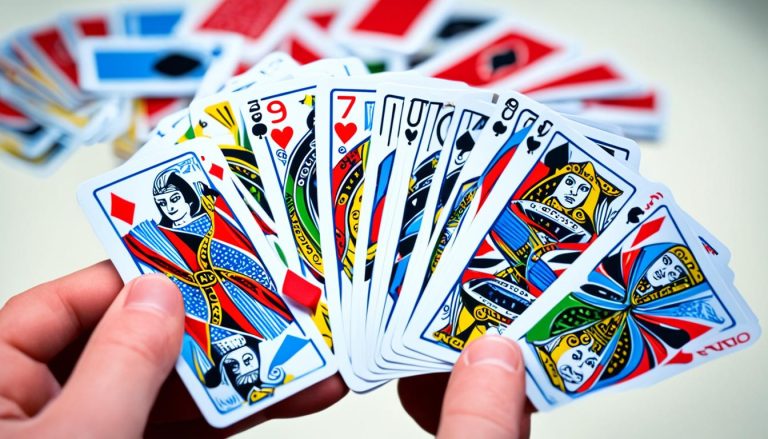Welcome to our guide on how to play squash! Whether you’re a beginner looking to learn the game or an experienced player seeking to improve your skills, we’ve got you covered. In this article, we’ll walk you through the squash rules, techniques, and strategies that will help you become a confident and competitive squash player.
How to Play Squash?
Playing squash is a fantastic way to stay active and have fun. It’s a fast-paced and exhilarating sport that requires agility, precision, and strategic thinking. Whether you’re playing for leisure or participating in competitive matches, knowing the ins and outs of squash will greatly enhance your experience on the court.
In the following sections, we’ll explore the dimensions of a squash court, the equipment you’ll need, the fundamental rules and scoring systems, as well as the techniques and tactics that can take your game to the next level.
Let’s delve into the world of squash and discover how to play this exciting game!
Squash Court Dimensions and Equipment
A squash court is a four-walled enclosed space with specific dimensions. To ensure a fair and competitive game, it is crucial to adhere to the standard guidelines regarding squash court dimensions. Additionally, having the right equipment is essential for a safe and effective game of squash.
Squash Court Dimensions
The dimensions of a squash court are as follows:
| Dimensions | Metric |
|---|---|
| Length | 9.75 meters |
| Width | 6.4 meters |
| Front Wall Height | 4.57 meters |
These standard dimensions ensure that players have enough space to play the game effectively and enjoy a fair competition.
Equipment Needed for Squash
When it comes to equipment, there are a few essential items that every squash player should have:
- Squash Racket: A high-quality squash racket is crucial for generating power and control in your shots. Choose a racket that suits your playing style and skill level.
- Squash Balls: Squash balls come in different speeds, denoted by colored dots on the ball. Beginners usually start with a larger, less bouncy ball, while advanced players use faster, smaller balls. Make sure to have a variety of balls to accommodate different playing conditions.
- Court Shoes: To ensure safety and proper footwork, invest in a pair of court shoes specifically designed for squash. These shoes provide the necessary grip and support to move swiftly on the court.

Choosing the right equipment and maintaining it in good condition will enhance your performance and overall experience on the squash court.
Squash Rules and Scoring
Squash is an exciting game that follows specific rules and scoring systems. Understanding these rules and scoring methods is essential to play squash competitively and enjoy the game to its fullest.
The game begins with a serve, where the server hits the ball against the front wall. The ball must bounce once in the opposite half of the court before the opponent returns it. The goal is to hit the ball to the far wall, allowing only one bounce on the floor. This dynamic and fast-paced gameplay requires agility, precision, and strategic shot placement.
Each rally in squash is scored, and the first player to reach a certain number of points wins the game. There are variations in scoring systems, including traditional scoring and point-a-rally scoring. In traditional scoring, players can only score points when they serve, while in point-a-rally scoring, every rally results in a potential point for either player, regardless of who served.
To give you a better understanding, here’s a summary of the scoring format in traditional and point-a-rally systems:
Traditional Scoring:
| Points | Scoring Method |
|---|---|
| 9 | Best of 9 games, where each game is played to 9 points |
| 3 | Matches are usually played to the best of 3 or 5 games |
Point-a-Rally Scoring:
| Points | Scoring Method |
|---|---|
| 11 | Matches are played to 11 points |
| 5 | Matches are played to 5 games |
It’s important to familiarize yourself with both scoring systems and understand the specific rules and regulations followed in the tournaments or matches you participate in. This knowledge will help you navigate and strategize your gameplay effectively.
Now that you are aware of the rules and scoring systems in squash, let’s move on to the next section where we’ll explore various techniques and tactics to elevate your game.
Squash Techniques and Tactics
Developing proper techniques and tactics in squash can greatly improve your game. Techniques include mastering different shots such as drives, drops, lobs, and volleys. It is important to practice these shots through specific drills to improve accuracy and consistency.
One effective drill to improve your drives is the “Figure of Eight” drill. In this drill, you move around the court in a figure of eight pattern, hitting drives from corner to corner. This not only helps improve your shot accuracy but also enhances your footwork and court coverage.
Another valuable drill is the “Boast and Drive” drill. In this drill, you alternate between hitting a boast shot, which aims to make the ball hit the side wall before reaching the front wall, and a drive shot, which travels straight back to the farthest wall. This drill helps improve your shot selection and ability to vary the pace and trajectory of your shots.
When it comes to tactics, controlling the middle of the court is crucial. This means positioning yourself strategically, so you can easily reach any part of the court while limiting your opponent’s options. Always strive to move your opponent away from the middle, making it more difficult for them to hit effective shots.
Varying the speed and direction of your shots is another key tactic. By mixing up the pace and angles of your shots, you can keep your opponent guessing and create opportunities to put them under pressure. For example, you can play a fast shot down the line followed by a slow and accurate drop shot to force your opponent to move quickly and react.
Understanding and implementing effective techniques and tactics will give you an advantage on the squash court. It is important to practice regularly, take guidance from experienced players or coaches, and analyze your own gameplay to identify areas for improvement.
Squash Techniques and Drills
| Technique/Drill | Description |
|---|---|
| Drives | Long, straight shots hit with power and accuracy. Helps maintain control of the rally and keep your opponent on the defensive. |
| Drops | Soft shots played close to the front wall, forcing your opponent to cover more ground and making it difficult for them to retrieve the ball. |
| Lobs | High shots hit to the back of the court, allowing you to gain time or reset the rally. Useful when you are under pressure or need to change the tempo of the game. |
| Volleys | Shots hit before the ball bounces, often used to cut off your opponent’s attacking opportunities or to create an offensive opening for yourself. |
Mastering these techniques and incorporating them into your game will give you more control, precision, and confidence on the squash court. Combined with effective tactics, you will be able to outmaneuver your opponents and dominate the game.

Conclusion
Playing squash can be challenging, but with consistent practice and a solid understanding of the rules, techniques, and strategies involved, you can significantly improve your game. Whether you are a beginner or an experienced player, implementing these essential tips will help you play squash with confidence and achieve success on the court.
To begin with, focus on mastering the fundamental techniques such as drives, drops, lobs, and volleys. Regularly practicing these shots through targeted drills will enhance your accuracy and consistency. Additionally, develop a strategic mindset by controlling the middle of the court and employing varied speed and direction in your shots. These tactics will keep your opponent guessing and give you an advantage during matches.
Remember that safety should always be a priority. Stay hydrated, warm up before playing, and use appropriate protective gear. Finally, keep in mind that squash is not only about competition but also about enjoying the game. Have fun, embrace the learning process, and savor the excitement of improving your squash skills. Best of luck on your squash journey!






